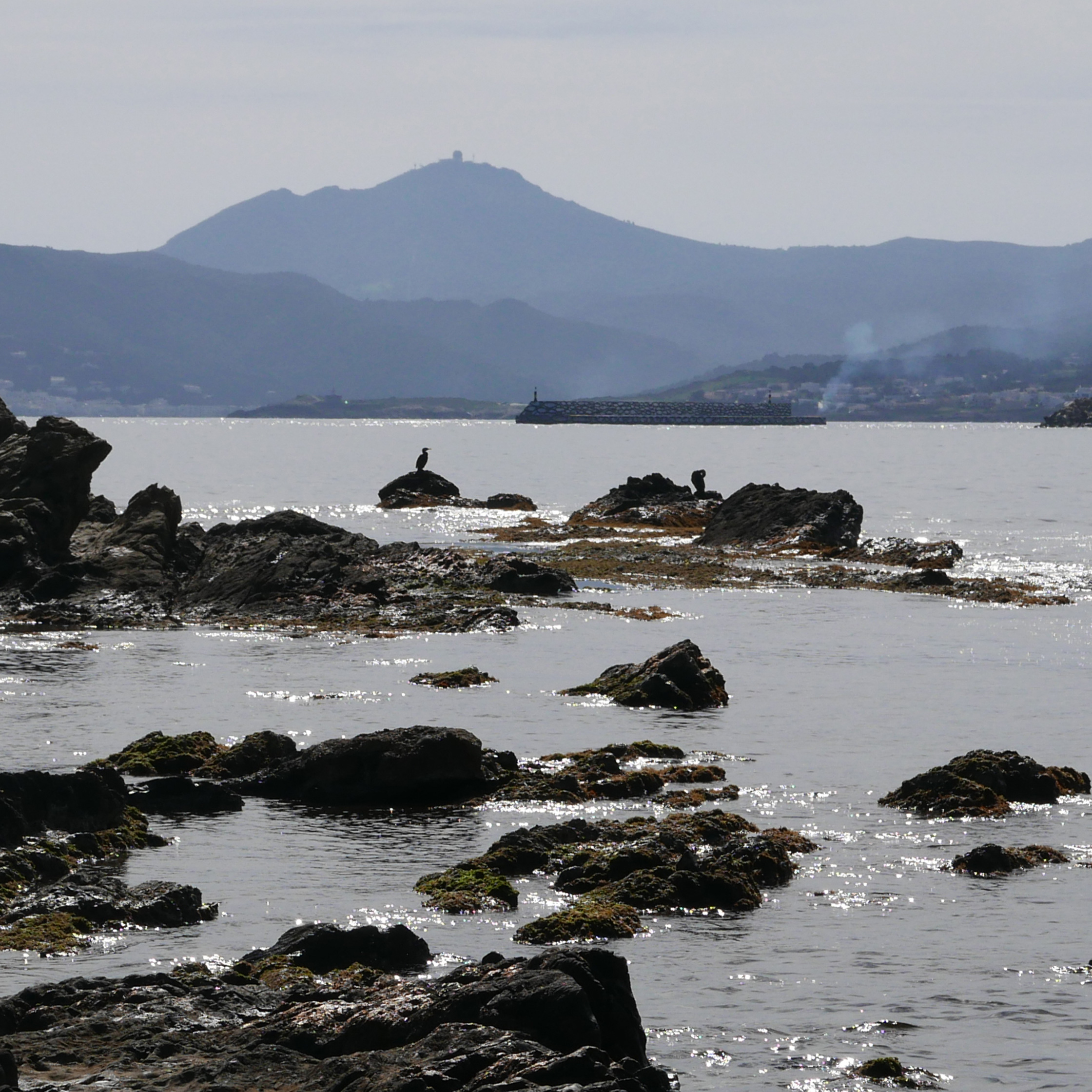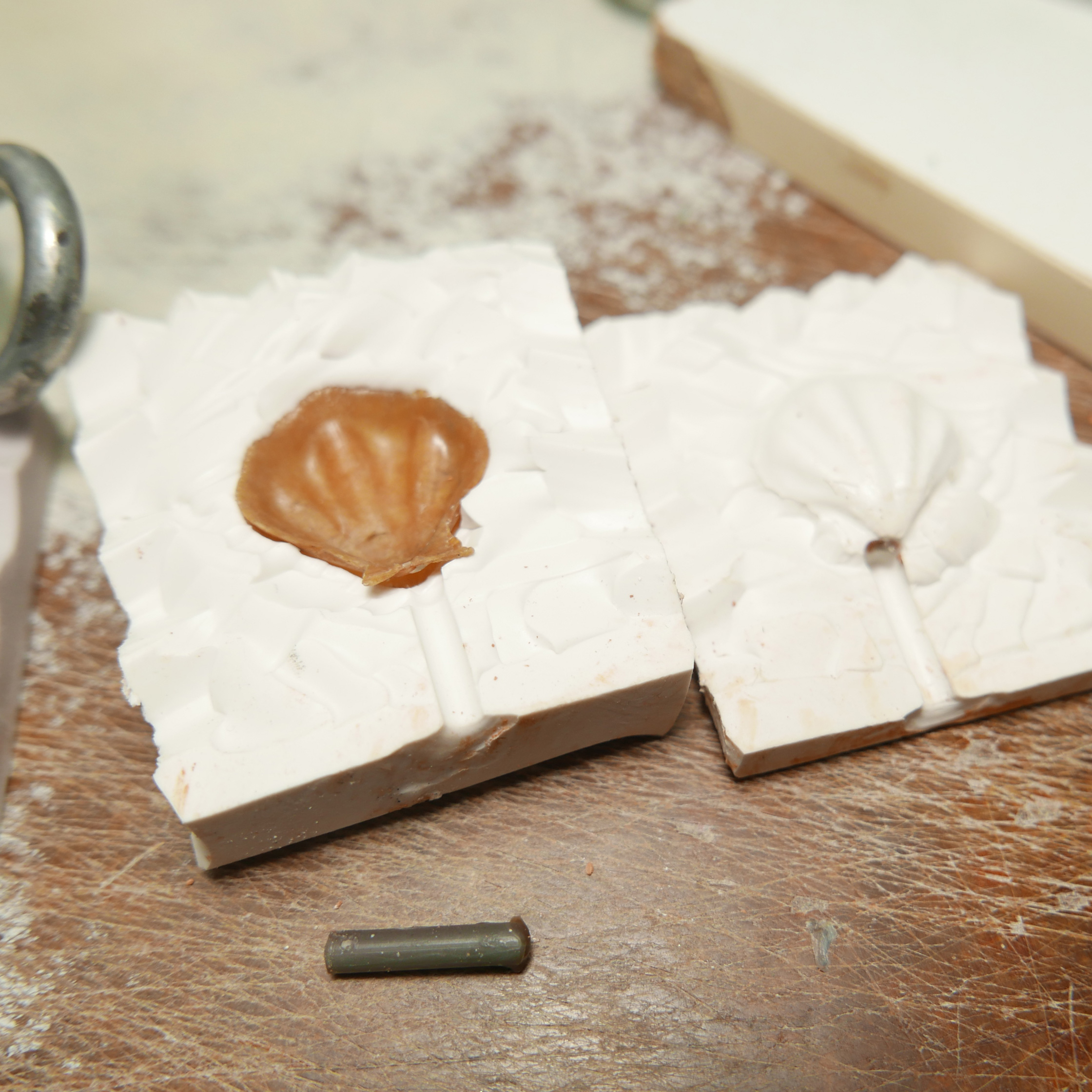Pitiua pieces are handmade. That is: heating the silver to work with it, chopping it to harden and shape it, sawing, filing, drilling it with different drill bits and cutters ... and welding it with the blower (flame), a flux (borax) and welding.
Each piece of sea is made from a real specimen. So each piece in this collection corresponds to the exact size of the original I found at sea (or some friend or client brought it to me). It really existed and ended up coming to me. And it is from this real piece that the mold is extracted.
All reproductions of marine species are made with the technique of lost wax or microfusion. Copies of any jewel are often made with this technique: a mold is made from it and wax reproductions are created from this mold that will become a precious metal. To do the microfusion process you need some infrastructure that I do not have, so this part is done in the foundry. I explain it below:
First, in the case of organic parts, a mold is made with cold silicone. Once this mold is obtained, some metal copies are extracted. From these copies I select the best one and work on it to make a definitive mold, this time with hot silicone and a special press.
This is the ultimate mold and is the one used to inject hot wax and extract as many copies as needed. The copies -in wax- are placed attached to wax tubes that are glued to a central cylinder (as if they were the branches of a tree). Once this wax tree has been completed, with the help of a metal cylinder into which gypsum is thrown, a gypsum cylinder containing the tree is made.
After vacuuming (to prevent bubbles from forming inside), it is placed in the oven so that the wax melts and disappears. Then the liquid/molten metal is quickly poured into it, which will reach every nook and cranny and result in copies in silver, brass, and so on.
From that moment my work in the workshop begins.
These raw copies are the ones that come to me. And they are the ones I work on conscientiously to get the final piece. I'm a bit of a "tiquis miquis", so don't worry about the finishes, which will be well done!
First of all, I cut and file the casting (piece that is where the silver is injected), and redo/file the piece at this point. I also file and round the edges so they don’t scratch, as well as the spikes or parts that protrude from it and could cause scratches. Once I have the piece "tuned" I go to make the lace, with different files and/or burrs.
Let's take the garota ring as an example.
If the garota is to be a ring, she has two opposite marks that I deepen and review so that the ring of the ring fits snugly in it and flattens well. On the other hand I cut the silver thread to the size of the desired size and fold it until the surface of the two ends - which I have also smoothed - touches. I weld the ring and then, with the help of a bowling pin, beak it to give it a round shape. Now, I go on to weld both pieces. That is: put the flux and the welding rods in the area to be welded and apply the flame until it dissolves and is well welded. Once this piece has been welded, and I have passed it through a liquid to remove any impurities, I make the corresponding finish (see section ‘Finishes and Maintenance’). I then file/polish it to get more or less shine in the final finish, if necessary. At this point, it would also be time to mount the chain on the perforated pendants or make the macramé of the pendants and bracelets that go with rayon thread. If you’ve read this far, it’s that you’re quite interested, so maybe you should take a course; Y ... colorin colorado, this story is over. To start another piece, then ...


